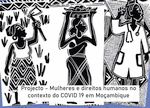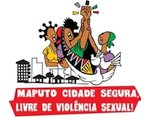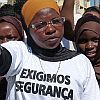Through feminism,
one sees another justice
Alda Facio
Published in: Outras Vozes, Suplemento do boletim n° 17, November 2006
The feminist practices and theories have taught that no social phenomenon whatsoever can be understood if not analysed from a gender perspective and this implies a reconceptualization of what is being studied. Therefore, to speak about the legal system of a country, we should reconceptualize what we mean by justice.
A proposal I made was to understand justice as comprising three types of norms: the formally promulgated norms (the normative formal component or legal justice), the norms arising from the selection and enforcement of laws (the structural component or judicial justice), and the informal rules that determine who has access to justice, when and how, and which are the rights of each one (the political-cultural component or customary law).
What kind of justice is this, how would it be like, who would create, interpret or enforce it? We cannot make a proposal if we do not have a thorough knowledge of what is wrong with the justice we have. Therefore, now I would like to try to summarise some of the criticisms which feminism has passed on the justice system. I am convinced that from here it will be easier to propose a more human justice which really is of use for a peaceful living together instead of being an instrument for the exploitation of the majority of people by a powerful group.
The justice system is correct, it only needs more women
The first criticism feminism passes on the administration of justice results from the conception of men and women as being essentially equal, with the same capacities and abilities. It is claimed that the problem lays in the fact that women have not had legal capacity and the possibility to demonstrate it. Thus, the accusations of androcentrism, which have been made to the justice system, are relatively easy to correct, as they do not question their basic assumptions. It is the exclusion of women from the power spaces, traditionally and historically male, which has to be reverted.
This criticism is, in fact, a denunciation of the justice system because of the unjust male practices that are reflected in the fact that all renowned lawyers, judges and legislators are men. This does not contradict the traditional ideas of justice, neither does it question its bias towards the class of the rich, its racism, homophobia, neither any of its omissions. Less still does it question the decisive contribution of the judiciary to the oppression of all women and many men. It points out and replaces what has been until now an injustice of men relative to women, without being preoccupied by the injustices between men and women, and as is obvious, less still, by the oppression of the majority of people on the part of some men.
It is a criticism focussed on the access of some women to public life, as this is the place where, according to this current, women have been excluded. It also starts from the assumption that women, because they are women, when they are in power will want to or may eliminate all discriminatory norms. Though it is true that we, women, occupy a position from which it is easier for us to differentiate some norms that discriminate us, we do not all suffer from discrimination in the same way, neither are all of us equally oppressed, and more still, some enjoy large economic, educational privileges, etc., and for many of us it is difficult to experience sexual discrimination in a conscious way. Therefore, it is not simply the inclusion of women in power, which guarantees the elimination of all discrimination suffered, by the various women, for being women.
However, one should not forget that, according to Carol Gilligan1, an increase of women in any of the spheres of justice creation or application would probably transform the system. This is so, because, according to their investigations, men tend to identify the judiciary as a system of rights and duties defined by norms. Women, on the contrary, tend to adopt a less dogmatic attitude and to seek solutions according to their notion of justice, in the context of respect for human rights. Setting aside the discussion about if men and women are morally different by nature, by socialization or by their condition of existence2, it is true that, in general, women have a notion of justice distinct from men. This difference manifests itself more decisively when we are solving an individual problem than when we are creating laws in the abstract. But even in this last case, it has been proved that a significant increase of women in parliament, for example, transforms the nature of the laws proclaimed by it.
The law is just, its application is poor
Another criticism starts from the principle that justice, with the exception of some discriminatory norms, is neutral, objective and universal, though it has been unjust for women because of the fact that it has been applied and interpreted by people who are insensitive to the power relations between the sexes. From this point of view it is argued that the lack of a gender perspective in the administration of justice has given rise to an androcentric deviation in the application and interpretation of laws, which are neutral and objective.
This argument is more frequently used with respect to the impunity of violators, incestuous persons, and domestic aggressors, to the low level of alimonies, etc. It is said, for example, that the judges do not apply correctly the legislation that punishes these offences or establish equitable alimonies in the abstract. On the basis of this criticism, it is argued that if the laws were applied by gender-sensitive people with a gender perspective, more violators would go to prison, the alimonies would be higher, etc. And, although this reasoning may be correct, this type of criticism does also not question the confidence in the intrinsic neutrality of the basic principles of justice. According to this position, it would be enough to have gender-sensitive male and female judges who interpret and apply the neutral laws from a gender perspective for the legal system be in general just.
Like the first one, this criticism does not question the androcentric deviation of all norms in force and less still of the basic assumptions of justice. Once again I would like to emphasize that although the criticism does not question the paradigmatic androcentrism of justice, the solution would do away with this paradigm. Let us only think about the effects it would have on the conception of the subject of rights and obligations, if all the norms were applied from a gender perspective. Although the norm applied was of an androcentric nature, the fact of being interpreted repeatedly in this gender perspective would necessarily transform its contents.
Equality or difference
A more radical criticism departs from the idea that women and men are different (for some they are basically different and for others culturally or socially different) and that these differences have only been taken into consideration by justice when this benefits men. These currents defend that the problem lies not in the differences in how these have been assimilated by the concept of inequality, sometimes hierarchised according to the term of greater value, the male, his characteristics, attributes and roles.
These currents do not seek equality of men and women before the law because, like the other concepts created by the patriarchal culture, the concept of equality is transformed by male experience and interests. This criticism calls into question that with legal equality the emancipation of women is achieved insofar as until now this has meant equalization with men. On the contrary, it puts into perspective the totalising concepts of equality and difference to assume that in some areas women will need equality and in other areas the validation of their difference.
Although this criticism questions the identical treatment in all areas as androcentric, it does not question the content that has been given to the principle of equality and, thus, does not propose a new one, but is satisfied with the demand that in some cases women should be treated as men and in other cases as women.
In her book “The Female Body and the Law”3, Zillah Eisenstein defends that one should take care with any gender-neutral proposal for justice, because this is a social system created for the domination of all women and of many men. She establishes that the norms treat women and men as if there were no power relation between the sexes, however they recognise differences between men and women, they always result in the preservation and reproduction of the subordination of women. She warns that the norms, which aim at conciliating the principle of equality with, for example, the sexual division of labour, tend to perpetuate inequality in other areas. For example, a norm that will compensate domestic women for their various domestic tasks, would contribute to the consolidation of the stereotype that we women are charged with domestic work, which has important repercussions in other areas of justice such as those regarding the family, to mention only one.
Androcentrism in the basic principles of justice
Starting from Zillah Eisenstein’s ideas, another kind of critique aims at finding androcratic traces in the so-called universal rights, fundamental principles or constitutional guarantees and in the mechanisms through which they protect themselves and even in the legal logic itself. This set of criticisms compels us to question the very assumptions of objectivity, rationality and universality, which underlie the liberal conception of the legal phenomenon. In this perspective it is claimed that a re-examination is needed of the paradigms and hypotheses underlying the theory and methodology of justice to detect the presence of androcentric traces. Furthermore, this approach leads us to question the bases of our ways of living together during the last five or six thousand years. It also proposes to challenge the universality of the so-called fundamental rights in the supposition that these also reflect male judgments or criteria – even when advanced by women.
Those who adhere to this approach remind us that to challenge does not mean to reject. With these criticisms it is intended to demonstrate that for an interest or a need to be universal, it should be experienced by all people and not only by the men of the various races, ages, classes, etc. It is recalled that what is questioned are the androcentric contents that have been given to human rights in general, not in order to depreciate them, but to impart them with more inclusive contents of the needs of the human diversity, with the objective to make them really universal.
For example, when from this point of view the principle of “in dubio pro reo” is called into question, it is not intended to replace it by “guilty as long as innocence has not been proved”, but to seek justice and benefits of reverting the burden of proof in those cases in which it is more reasonable to do so because of the type and circumstances of the offence. When “freedom of speech” is called into question, it is not to replace it by censorship, but to counterbalance it with other important and necessary human rights, such as physical integrity, the right to be well-reputed, etc.
As said above, in this perspective the legal logic as a male logic is also called into question. Once more their supporters advise us that this does not imply the replacement of reason by irrationality. It means questioning the pretension of reducing legal reasoning to logical-mathematical reasoning. It means questioning the deductive dogmatic system characteristic of formal logic, because it is not the adequate procedure to know, interpret and apply justice. It means understanding that justice is made up of problems that don’t have a unambiguous solution but several possible alternatives from which one has to choose one. It means knowing what is just in each concrete case. Questioning the legal logic means opening up new possibilities of cohabitation relations between human beings without reproducing the logic which until now has restricted the exercise and enjoyment of the human potential of women and men.
From this approach it is insisted that justice is male because it are the needs and conflicts of men that are codified in it. This does not mean that women have not been taken into account. But if they were, it is from the male point of view. Those women who adhere to this approach insist that this does not mean that there is a conspiracy on the part of men fomenting this intention. However, they point out that men continue to occupy the most important positions and it is them who determine the way of looking at social reality, giving it an appearance of normality even for those women who are subordinated to it. And justice as an institution contributes to a large extent to the preservation of the male vision of the world.
Justice as discourse
A recent feminist criticism of justice4 interprets it in the Foucaultian discourse sense, that means, as a wide range of discussions about a theme or themes, which occur within a given society5. But it also interprets justice in the more concrete language sense, as a set of sounds, significance units and grammatical structures, as well as the contexts in which justice evolves. In this sense, the micro-discourse of justice is analysed, that means, all events that constitute justice are analysed linguistically – drawing up a will, giving evidence in court, preparing a contract, requesting a divorce – in order to understand its macro-discourse as an abstract social phenomenon.
On the basis of this critique, justice as a micro and macro-discourse is understood as the authorised language of the State and, consequently, as a discourse impregnated with State power. In this perspective and analysing the language of justice, the feminists depart from the principle that this language continues a patriarchal and androcentric discourse, for two reasons: first because this language reflects the dominant culture in each State, and the dominant culture in all current States is patriarchal; and second, because if state power is patriarchal, its discourse has to be as well.
As explained above, power analysis is central in the majority of feminist theories and as one can observe, it also is in the analysis of justice as discourse. Analysing simultaneously justice, language and power, this critique allows us to understand better the reason why the discrimination and oppression of women continues, in spite of the majority of the explicitly discriminatory substantive norms having been repealed. It suggests that we should listen to how policemen talk to the women who come to denounce their husbands, that we should observe the expression of male and female judges when a woman victim is giving testimony in a case of violation, that we should analyse the words used by male and female mediators in cases of adultery, etc. Although in none of these cases there is misuse of the law on the part of the officials, nevertheless, in all of them the perception is reaffirmed that there will be no justice for women.
Why is it that women know a priori that the law will not treat them with fairness in spite of the Political Constitution guaranteeing equality of the sexes before the law? The answer will not be found in a study of the formal norm, as this criticism tells us. The answer is found in the details of daily legal practice, details almost exclusively centred in language.
Therefore, this critique studies the language of justice in order to be able to understand the power of the law. The premise is that power is not an abstraction but a daily reality. For the majority of people, legal power does not so much manifest itself in its coercive power or in the High Court of Justice decisions, but in the thousands of legal proceedings and mini-dramas which unfold daily in the offices of lawyers, police stations or courts, as well as in the news, soap operas and conferences which somehow deal with a legal problem. The dominant element in each one of these proceedings, mini-dramas or soap operas is the language. Through language, power is abused, exercised or questioned.
As said above, discourse is not only a way of speaking about a theme, but also a way of thinking and acting on the theme. Thus the discourse of justice is a way of speaking, thinking and acting on women, men and the relations between both. Meanwhile, as the discourse is patriarchal, women will be discussed, described and treated by the justice system in a way subordinated to the interests of men. Therefore, even in those States which have implemented legal reforms to eliminate, for example, the revictimization of women in cases of sexual violence, forbidding asking them about their previous sexual experience, one has not succeeded in achieving a just and equitable treatment of women. According to this critique, this is due to the fact that the discourse continues being patriarchal as it continuously reflects and reproduces the idea that women have less value as human beings. If we have less value, what we say in court, for example, has necessarily less weight than what a man says. It also leads to thinking that what happens to a woman, for example, a sexual violation, is not as serious as when it happens to a man and it is definitively less serious than sending a man to prison. These ways of speaking and thinking lead to a treatment of the law which, although protecting, ends up discriminating women.
Recognising that justice is a discourse of power, both of state power and of the multiple local powers, this criticism tells us that we should pay attention, more than to the formal norm, to how the norm sets the rules, thoughts, attitudes and behaviours it presupposes and incorporates, as well as pay attention to how the norm institutionalises what should be considered as legitimate or illegitimate, acceptable or unacceptable, natural or unnatural. The study of justice as discourse may be the key for women because it may demonstrate how justice is more patriarchal than the norm, however much the norm may possibly be protecting women’s rights.
- Gilligan, Carol. In a Different Voice: Psychological Theory and Women’s Development. Harvard Unversity Press, Cambridge, 1982, p. 174.
- I understand (perceive) that the existential condition incorporates in its turn biological and social elements, and therefore I differentiate (distinguigh) it both from the physiological and the culturally constructed condition.
- Eisenstein, Zillah. The Female Body and the Law. University of California Press, 1988.
- Facio, Alda. El Derecho habla y habla (Lecture presented in several workshops).
- Foucault, Michel. The History of Sexuality. Vol. 1: An Introduction. Random House, New York, 1978, p. 101







 Information in English
Information in English



















